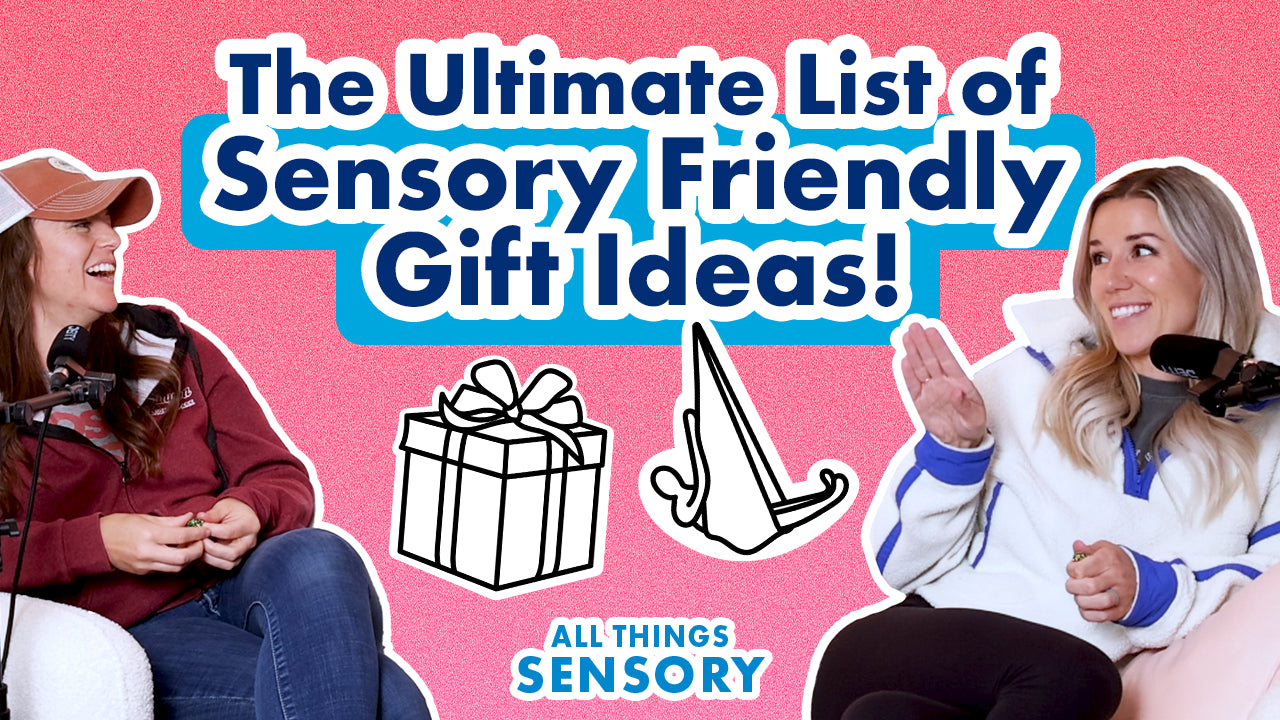Your Cart is Empty

Shop our BIGGEST sale of the year!https://harkla.co/pages/black-friday-cyber-monday
In this episode, we are breaking down what it means for someone to be a “sensory seeker” and what it means for someone to be a “sensory avoider.”
Then we talk about our favorite sensory products for both including the Harkla Compression Swing, lycra tunnels, weighted medicine balls, therapy/yoga balls, a crash pad, and more!
Check out all of the links below!
We’d love to answer your questions on the podcast! Fill out this form ->https://harkla.typeform.com/to/ItWxQNP3
All Things Sensory Podcast Instagram
Harkla Website - Shop Sensory Products!
5 Activities for a Sensory Seeker
Supporting Mixed Sensory Needs
10 Activities with a Yoga Ball
Rebounder Trampolines (Amazon)
Parenting a child with sensory processing challenges can feel overwhelming. You’re not alone if you’re searching for answers to questions like, “Why does my child seem to crave movement?” or “Why does my child get overwhelmed in noisy environments?”
Understanding sensory seekers and avoiders is a powerful first step in creating a supportive environment tailored to your child’s needs.
Sensory seekers crave more sensory input. Their brains tell them they need more movement, touch, sound, or other sensory stimuli to feel organized and focused.
You might notice your sensory-seeking child:
This intense need for sensory input can make it challenging for them to sit still in school, complete tasks, or transition between activities. However, meeting their sensory needs with intentional tools and strategies can help them feel more regulated and focused.
Sensory avoiders are often overwhelmed by everyday sensory input. Sounds, smells, textures, and even light can feel like too much, causing them to withdraw or act out.
Sensory avoiders may:
These sensitivities can disrupt daily routines and make social or academic settings overwhelming. With the proper support, sensory avoiders can feel safer and more comfortable.
Every child is unique, and many children have mixed sensory needs—they may seek certain types of input while avoiding others. For example, a child might seek proprioceptive input (like hugs or jumping) but avoid auditory input (like loud noises).
Identifying and supporting these needs can reduce stress for you and your child, promoting calm and confidence.
If you're wondering which products might help your child, here’s a curated list based on expert recommendations.
Whether your child is a sensory seeker, avoider, or a mix of both, small changes at home can make a big difference. Here are some general tips:
Every child’s sensory journey is unique. By understanding your child’s sensory preferences and providing the right tools, you can create an environment where they feel supported and empowered.
BORING, BUT NECESSARY LEGAL DISCLAIMERS
While we make every effort to share correct information, we are still learning. We will double check all of our facts but realize that medicine is a constantly changing science and art. One doctor / therapist may have a different way of doing things from another. We are simply presenting our views and opinions on how to address common sensory challenges, health related difficulties and what we have found to be beneficial that will be as evidenced based as possible. By listening to this podcast, you agree not to use this podcast as medical advice to treat any medical condition in either yourself or your children. Consult your child’s pediatrician/ therapist for any medical issues that he or she may be having. This entire disclaimer also applies to any guests or contributors to the podcast. Under no circumstances shall Rachel Harrington, Harkla, Jessica Hill, or any guests or contributors to the podcast, as well as any employees, associates, or affiliates of Harkla, be responsible for damages arising from use of the podcast.
Keep in mind that we may receive commissions when you click our links and make purchases. However, this does not impact our reviews and comparisons. We try our best to keep things fair and balanced, in order to help you make the best choice for you.
This podcast should not be used in any legal capacity whatsoever, including but not limited to establishing “standard of care” in a legal sense or as a basis for expert witness testimony. No guarantee is given regarding the accuracy of any statements or opinions made on the podcast.
Comments will be approved before showing up.